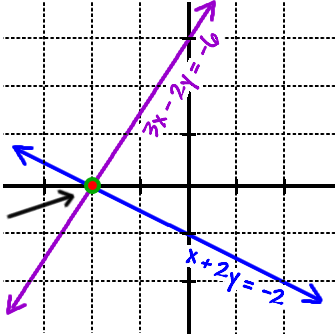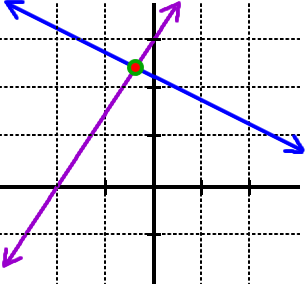Here's another one:
![]()
![]()
Graph them!
|
Well, it LOOKS like they
intersect at
( -2 ,
0 ).
But, what if it's really
( -1.999 , 0.001 ) ? We have to check to be sure! |
 |
![]()
![]()
| Yep! So, the answer is |
|
. |
TRY IT:
Solve by graphing:
![]()
![]()
This is a cool method for getting you to see what's going on. But, it has serious problems.
What if you get a graph like this?
 |
What's the answer?
Uh...
(
- .4 , 2.3
)
? There's no way to tell. |
So, unless the problem is designed to cross at a nice, clean point, the graphing method is pretty useless for solving systems.